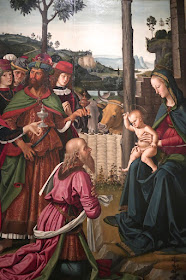The capital of Umbria, Perugia is a spectacular and enchanting hilltop town with a compact historic centre and rambling maze of charming medieval streets, exceptional museums and unique archeological treasures. Overlooking the verdant Tiber Valley, the city was originally founded by the Etruscans, but walking through the city one also feels the strong imprint of Roman, Medieval and Renaissance influences, testimony to the historical, artistic and cultural wealth of Perugia's unique rich and colourful past. At the centre of Perugia is Piazza IV Novembre, considered one of the most beautiful squares in Italy. Surrounded by the Palazzo dei Priori and the Cathedral of San Lorenzo, the heart of Piazza IV Novembre is actually Fontana Maggiore, a beautiful medieval fountain that was built in the 12th century, which brought water to the town from Mount Pacciano through an extensive aqueduct, an astounding feat of its time. The fountain is composed of two marble polygonal basins, representing biblical, secular and mythological motifs, and one of the best examples of Gothic art found anywhere in Italy. On the other side of the square is the Palazzo dei Priori, which houses the National Gallery of Umbria, the most richest and most important art collections in Umbria, including masterpieces from the Middle Ages and Renaissance with works by Arnolfo di Cambio, Nicola and Giovanni Pisano, Duccio di Boninsegna, Gentile da Fabriano, Beato Angelico, and Piero della Francesca, with considerable amount of space dedicated to the Umbrian artists Benedetto Bonfigli, Bartolomeo Caporali, Fiorenzo di Lorenzo and especially renowned paintings by local favourite Perugino, who famously taught Raphael.
Statue Of Pope Julius III by Vincenzo Danti dating from 1555 outside Perugia's Duomo,
the Cattedrale di San Lorenzo
Overlooking Piazza IV Novembre is Perugia's stark Medieval cathedral with handsome Baroque portal by Pietro Carattoli, although the main facade was never completed
The interior however is late Gothic and lavishly ornate, contrary to the humble exterior
The altarpiece by Signorelli
The sacristy with a cycle of paintings of the Martirio di San Lorenzo by Giovanni Antonio Pandolfi (1573-76), an extraordinary example of illusionist baroque painting
Fontana Maggiore, the beautiful medieval fountain that was built in the 12th century, and brought water to the town from Mount Pacciano through an extensive aqueduct
Sandri Pasticceria on Corso Vannucci has been around since 1860
The servers still wear formal attire and make the best cappuccinos in Perugia
My cappuccino breakfast before heading into the Gallerie Nazionale
Entrance to the National Gallery of Umbria with the richest and most important
art collections in Umbria, housed in the Palazzo dei Priori
Painted wood Medieval processional cross from 1272 by Maestro di San Francesco
Politico di Sant'Antonio from 1467 by Piero della Francesca
Pala di Santa Maria dei Servi by Perugino from 1473
Pala Opistografa di Monteripido by Perugino from 1502
Sant'Agata by Lello da Velletri from 1427
Scomparti di Trittico by Maestro di Paciano from 1330
Nativita della Vergine by Pietro Berrettini from 1643
Detail of Presentazione della Vergine al Tempio by Luigi Pellegrino Scaramuccia from 1680
Saint Gilles du Gard by Pierre Subleyras from 1700
Special exhibition of paintings at the exquisite Collegio del Cambio, next door to the National Gallery
The sumptuous interior of the Audience Hall of the Cambio College in Perugia was the main salon of the local exchange office with a cycle of frescoes painted by Pietro Perugino at the apex of his career
Perugino's gorgeous frescoes adorn the walls and the ceilings of the Cambio
Cafés and outdoor restaurants along Corso Vannucci
Emerging from a a full morning feasting on the artistic and cultural treasures of the Galleria Nazionale dell'Umbria and Collegio di Cambio, it was time to nurture our other senses and made our way to Al Mangiar Bene. Tucked down a narrow alley, this subterranean restaurant sources nearly all its ingredients locally from organic suppliers, from its pasta flour to the tender cuts of beef, thinly sliced and served with rocket or truffle. Pizza and calzone are baked in a hearth-like brick oven. Even the beer and wines are organic. Just a couple of minutes walk west of the main Corso, Al Mangiar Bene occupies part of an historic medieval building, with old stone walls and impressive brick vaulted ceiling. The décor is charming with simple wooden tables and chairs, but the food is carefully and skillfully prepared. They’re proud of their local wines and microbrewery beers and of their locally sourced ingredients, listed on the back of each menu. Dishes are mostly Umbrian, with the odd regional excursion such as their version of Rome’s cacio e pepe pasta, and in the evening one can order pizza from the wood-fired oven.
Entrance to Ristorane al Mangiar Bene through the Medieval archway of Via della Luna
Tucked away down a steep walkway through old covered archways leads to Al Mangiar Bene
The Medieval-era entrance to the restaurant
With with old stone walls and impressive brick vaulted ceiling, the décor is charming with simple wooden tables and chairs, but the food is known for its traditional Umbrian cuisine
The menu features local charcuterie, handmade pasta and locally sourced produce,
with a list of suppliers highlighted on each page
Lovely squishy fresh baked bread
A carafe of Sagrantino di Montefalco
Insalate di Caprese
Insalata Mista
Umbricelli al Sugo di Cinghiale
Rigatoni alla Norcina with homemade pasta, sausage, and salsa tartufata
Braciola di Maiale con patate fritte e chiccoria
Tagliata con Rosmarino e sale
Macchiato








































No comments:
Post a Comment